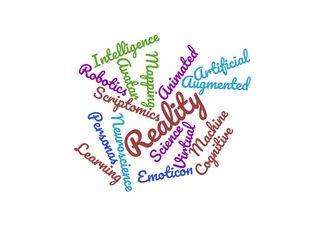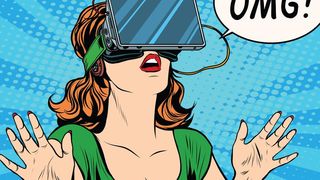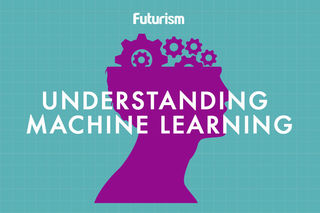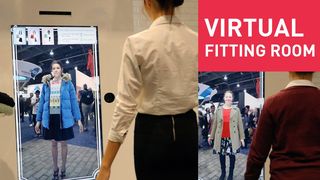Media
Social Media Neologisms: New Words & New Meanings
Neologisms alter the psychology and meaning of words in our language.
Posted September 23, 2018

Luskin Learning Psychology Series, No. 42
Social media neologisms are assimilating into our language and sharpening our evolving human communication. The Millennial generation is passing, making way for Gen Z, the new generation composed of those born after 1995. The new understanding and nuanced meanings of current neologisms are normal vocabulary for this newest generation of nearly 74 million Gen Z youth in the U.S. who range in age from 1 - 25 years-old.
International business, health care, education, public policy, advertising, entertainment, marketing, technology and communication are awash with neologisms that are not familiar to the majority of Americans. The future is coming toward us and it is human-centered and screen-deep. Vocabulary is evolving and what you say substantially reveals who you are. Your speech reveals how well you understand new media and modern mass communication.
In conversations, I regularly test people’s understanding of neologisms. Surprisingly, many don’t understand new words, or the new meanings now assigned to old words. Often, these new words are unfamiliar.
My purpose in this article is to examine some of the new words and new uses of old words as examples of our evolving vocabulary. This article calls the neologism phenomenon to your attention.
Following is my own interpretation of the meaning of the following ten examples adapted from widely reported new definitions. These are words you should understand and use.

1. Virtual Reality is computer-generated simulation of three-dimensional images or artificial environments that can be interacted with to create a seemingly real or physical experience for a person using special electronic equipment such as a helmet with screen, gloves or other attachable or wireless sensors. The user suspends belief and accepts the virtual, artificial reality as a real environment. (Mortimer 2018)
2. Artificial Intelligence is the theory and development of computer systems that perform tasks previously requiring human intelligence. The Oxford Living Dictionary says features include visual perception, speech recognition, decision-making, and translation between languages. Dictionary 2018)

3. Machine Learning is a method of data analysis that automates analytical model building. It is a branch of artificial intelligence based on the idea that systems can learn from data, identify patterns and make decisions with minimal human intervention. Machine involves powerful analysis and understanding of patterns. (SAS 2018) https://www.sas.com/en_us/insights/analytics/machine-learning.html

4. Augmented Reality includes computer-generated images that amplify a user's view of the real world, thereby creating a composite view that extends and expands perceived reality. Augmented reality is not simply the evolution of virtual reality. They are two technologies with different R&D paths and usages. Augmented reality integrates digital information with real environments in which people live and everything is processed and produced in real time. This is a main difference with virtual reality. Virtual reality uses artificial environments. Augmented reality uses the real world.
5. Avatars are graphical iconic figure representations of individuals in video such as in film, games, Internet forums, etc. (Nowak 2018)
6. Learning Management Systems (LMS) are software applications for the teaching, administration, course management, communication, documentation, tracking, reporting and delivery of educational courses and programs. An LMS provides a medium for teaching and learning in blended and online learning. The first introduction of the digital LMS was in the mid-1990s. (D2L 2018)
7. Animated Personas are computer generated representations of personality types. The film Avatar includes examples of animated personas.
8. Big Data uses extremely large data sets that may be analyzed computationally to reveal patterns, trends, and associations, especially relating to human behavior and interactions. Much IT investment is going into managing and maintaining big data leading to breakthroughs in media psychology, medicine, space science and research in all fields. (SAS Institute 2018)
9. Neuroscience is brain science, including such phenomenon as neurochemistry, cognitive and experimental psychology that deal with the structure and function of the brain and nervous system. An applied example is in media psychology.
10. Cognitive Science is the study of pragmatic thought leading to learning, behaviors and mental organization that includes aspects of psychology, linguistics, philosophy and computer modeling.
There are now many neologisms assimilating into our new “gig economy.” I am sharing the definitions in this article with you to provoke your curiosity, offer a baseline for discussion and to suggest that our living language is rapidly and generationally changing. These ten neologisms are only a start in a process of recognizing and beginning to use these words in new ways in communication.
The field of media psychology studies the connections between human behavior, social media and technology. Media Psychology is the subject matter of Division 46 of the American Psychological Association, Society for Media Psychology and Technology. APA Division 46, Media psychology is a recognized sub-specialty in psychology. APA Division 46 was formed in the mid-1980s to bring together professionals who work in the various fields of social media.
This article shares my exploration of some of the new words and new meanings of important old words that we now use as we chart our future. Our living language is the voice of our future. Language communication is important, so please send your suggested neologisms to Bernie@LuskinInternational.com for inclusion in follow up articles identifying and explaining our growing lexicon of neologisms as our language evolves.
Author
Dr. Bernard Luskin is Past President, Society for Media Psychology and Technology, Division 46, American Psychological Association. www.LuskinInternational.com. Luskin founded the first MA, PhD program in Media Psychology and received an APA lifetime achievement award for contributions to media, psychology and education.
Special thanks for editorial and research assistance to Dr. Toni Luskin.
###
References
Citations:
D2L (2018). "What is a Learning Management System." Retrieved 09-15-18, 2018, from http://www.D2L.com.
Dictionary, O. L. (2018). Artificial Intelligence. Oxford Living Dictionary. London, Oxford Dictionary. The theory and development of computer systems able to perform tasks normally requiring human intelligence, such as visual perception, speech recognition, decision-making, and translation between languages. Speech recognition and artificial intelligence are especially critical.
Editor, S. O. (2018) Microsoft Offers Research on Big Data Research. Social Science Space
Mortimer, N. (2018) How Virtual Reality is Impacting the Built Environment. Australian Design Review
Nowak, K. L., Fox, J. (2018) Avatars and computer-mediated communication: A review of the definitions, uses and effects of digital representations. Review of Communication Research 6, 30-53
SAS (2018) Machine Learning: What it is and why it matters. SAS Institute




